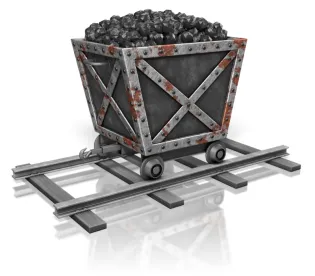In late 2014, the Mine Safety and Health Administration published its regulatory agenda for 2015. MSHA will consider how operators perform workplace examinations via a request for information from stakeholders in June 2015 to address fatalities in the metal/nonmetal side of the industry.
Without question, regular examinations of the workplace are a necessary and invaluable tool to ensure a safe and healthy work environment. Pursuant to 30 C.F.R. Section 56.18002, which applies to surface metal and nonmetal mines, and 30 C.F.R. Section 57.18002, which applies to underground metal and nonmetal mines, operators are required to examine each working place at least once each shift for conditions which adversely affect safety or health.
Pursuant to Sections 56.2 and 57.2 the term “working place” is defined as “any place in or about a mine where work is being performed.” Thus, operators must examine those locations where persons work during a shift in the mining or milling process, including locations where maintenance and repair activities are being performed. Such locations may include roadways, dump points, highwalls, conveyors, shops, and any other area of the mine where work is being performed. During the workplace examination, the regulations require the competent person to examine each working place for conditions which may adversely affect safety and or health.
Unlike examinations of surface and underground coal mines which must be performed by a “certified person,” examinations of metal and nonmetal mines must be performed by a “competent person.” A “competent person” is defined as “a person having abilities and experience that fully qualify him to perform the duty to which he is assigned.” According to MSHA’s Program Policy Manual, this includes any person who, in the judgment of the operator, is fully qualified to perform the assigned task. This may or may not be a member of mine management and MSHA does not require that a competent person be a superintendent or a mine foreman.
Following the examination, the operator shall promptly initiate appropriate action to correct the conditions which adversely affect safety or health. Operators must also record their examination and keep a record of such examination for at least one year. In March 2015, and in response to questions raised by operators regarding the types of appropriate records under Parts 56 and 57, MSHA reissued Program Policy Letter No. P14-IV-01. Citing MSHA’s Program Policy Manual, the Policy Letter provides that the record of examination must include (1) the date the examination was made; (2) the name of the individual who performed the examination; and (3) the working places examined.
While many workplace examination forms in the metal/nonmetal industry include notations for hazardous conditions found by the examiner, it is important to note the language in the workplace examination regulations in Parts 56 and 57 do not require operators to provide MSHA with a record of hazardous conditions found during the workplace examination. As stated above, the regulations simply require the competent person to examine each working place for conditions which may adversely impact safety and health. Moreover, a plain language reading of the workplace examination standards indicate operators must show the examination was made, the name of the person making the examination, and the working places examined. This is entirely consistent with MSHA’s March 2015 Program Policy Letter No. P14-1V-01.
Records of examinations may be recorded in an examination book, but they do not have to be. Records of examinations also may be recorded on computer databases or documents already in use, including time cards and production sheets. Because records of examinations must be made available for review to the Secretary of Labor or his authorized representative, operators should consider recording their examination in a consistent format so that they are readily available when an inspector requests them. Moreover, Parts 56 and 57 do not specify when the examination of the workplace must take place during each shift. The standard only requires an examination is completed at least once each shift.
As the workplace examination issue in metal/nonmetal continues to be on the front burner for MSHA, it is likely cases involving the scope of the exams, as well as the recording requirements, will soon appear before the Federal Mine Safety and Health Review Commission. MSHA could also consider rule making to address these issues. However, regulatory agencies often find it more expedient to produce change by judicial fiat rather than the rigors of rule making.
As a result of the increased number of fatalities in the metal/nonmetal industry, MSHA has placed an increased emphasis on workplace examinations. In order to improve workplace examinations, there are several steps that operators can take. First, the persons who are responsible for performing the examinations must be properly trained on the examination requirements of Parts 56 and 57. Examiners must be able to recognize conditions that may adversely affect safety and health, and promptly initiate appropriate action to correct such conditions. In addition, examiners must be made aware of what is required to be recorded on the workplace examination report.
Second, operators must create and maintain a culture of safety in the workplace and provide examiners with the authority and the resources necessary to promptly initiate the appropriate action to correct conditions which may adversely affect safety and health, even if correction results in a delay of production. Examiners also must view their examination responsibilities as more than a daily task, but an invaluable tool that protects the health and safety of everyone at the mine – themselves included.
Third, operators should hold regular safety meetings with their employees to discuss conditions found during examinations. Creating an open dialogue about safety reinforces the company’s commitment to a safe and healthy work environment, and examiners may learn about issues during those meetings that may help them identify and correct issues found during their examinations. Finally, as the number of section 110 investigations continue to rise in the metal/nonmetal industry, operators would be wise to provide detailed training with management, as well as hourly examiners, relating to potential civil and criminal liability of company agents under section 110 of the Mine Act.



 />i
/>i
